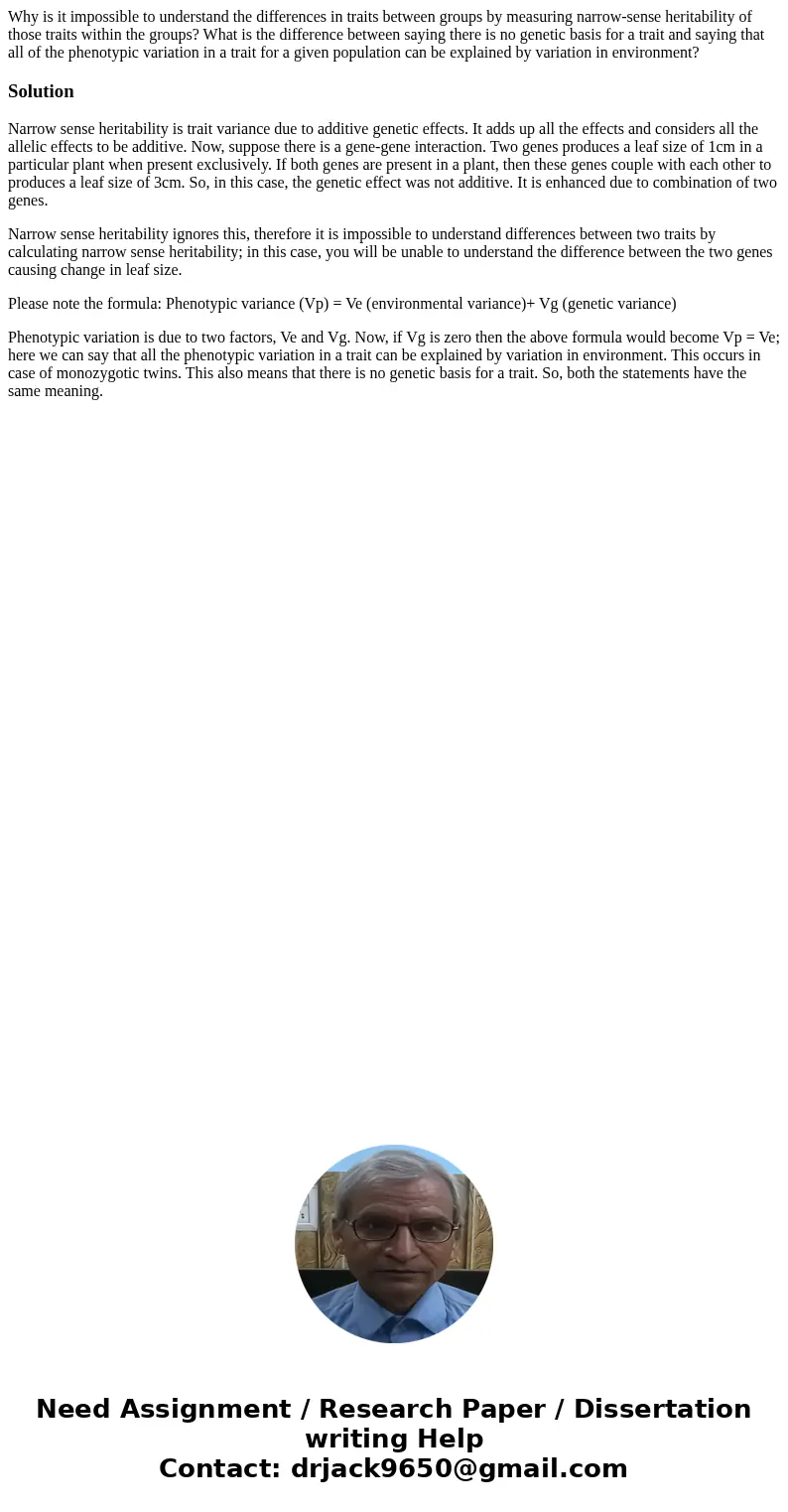Why is it impossible to understand the differences in traits
Why is it impossible to understand the differences in traits between groups by measuring narrow-sense heritability of those traits within the groups? What is the difference between saying there is no genetic basis for a trait and saying that all of the phenotypic variation in a trait for a given population can be explained by variation in environment?
Solution
Narrow sense heritability is trait variance due to additive genetic effects. It adds up all the effects and considers all the allelic effects to be additive. Now, suppose there is a gene-gene interaction. Two genes produces a leaf size of 1cm in a particular plant when present exclusively. If both genes are present in a plant, then these genes couple with each other to produces a leaf size of 3cm. So, in this case, the genetic effect was not additive. It is enhanced due to combination of two genes.
Narrow sense heritability ignores this, therefore it is impossible to understand differences between two traits by calculating narrow sense heritability; in this case, you will be unable to understand the difference between the two genes causing change in leaf size.
Please note the formula: Phenotypic variance (Vp) = Ve (environmental variance)+ Vg (genetic variance)
Phenotypic variation is due to two factors, Ve and Vg. Now, if Vg is zero then the above formula would become Vp = Ve; here we can say that all the phenotypic variation in a trait can be explained by variation in environment. This occurs in case of monozygotic twins. This also means that there is no genetic basis for a trait. So, both the statements have the same meaning.

 Homework Sourse
Homework Sourse